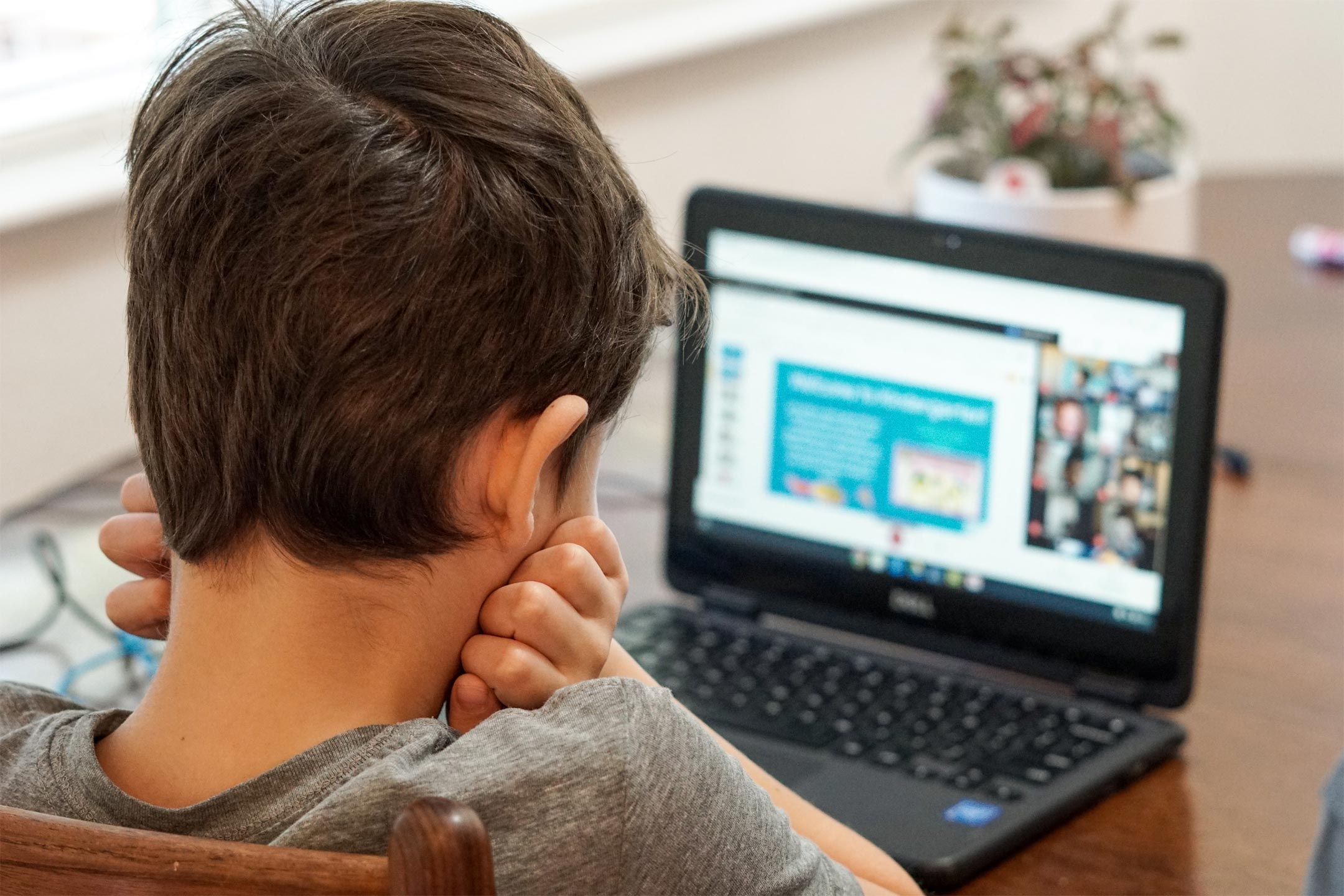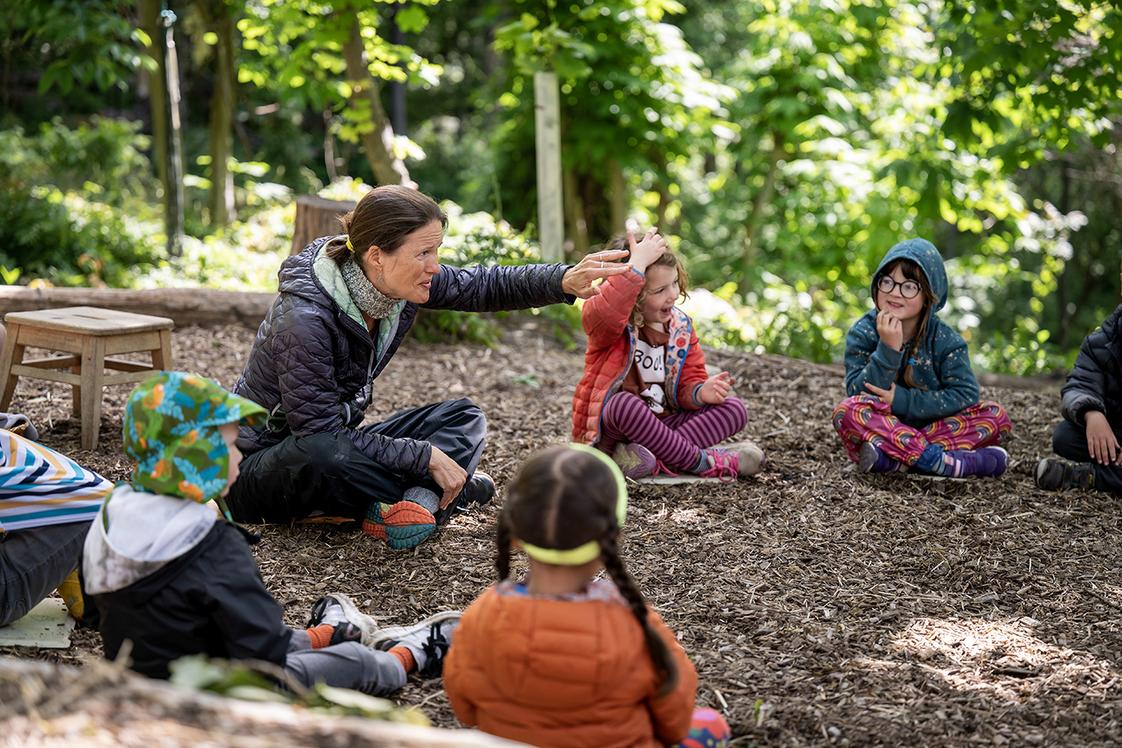

· By Kairvi Chona
Waldorf vs. Traditional Schools: Which Education System is Right for Your Child?
When it comes to education, one size does not fit all. As parents, we want to give our children the best learning experience possible, but the traditional school system doesn’t always meet every child’s needs. That’s why more and more parents are exploring alternative education methods—and one approach that’s been gaining attention is Waldorf education.
But what exactly makes Waldorf schools different? You may have heard that they focus more on creativity, that they don’t introduce academics as early as traditional schools, or that they don’t use screens in the classroom. While these things are true, Waldorf education is much more than that. It’s a holistic approach designed to nurture a child's intellectual, emotional, and physical development through hands-on experiences, storytelling, and a deep connection to nature.
In contrast, traditional schools often emphasize standardized testing, structured lesson plans, and early academic pressure. While this method works well for some children, others may thrive in a more flexible and creative learning environment.
If you’re wondering whether Waldorf education might be the right fit for your child, this blog will walk you through everything you need to know. We’ll explore how it compares to traditional schooling, why it emphasizes art and nature, and whether it truly prepares children for the future. Let’s dive in!
What is Waldorf Education? A Learning Approach Focused on the Whole Child
Waldorf education was founded by Rudolf Steiner in 1919 with one big idea in mind: education should nurture the whole child—mind, body, and emotions. Unlike traditional schools, which often prioritize early academics and standardized tests, Waldorf schools take a different approach. They focus on creativity, hands-on experiences, and real-world learning rather than rote memorization and worksheets.
In Waldorf classrooms, you won’t see kids glued to screens or buried in textbooks at a young age. Instead, children are encouraged to learn through play, movement, and storytelling. The idea is that kids absorb knowledge best when they’re ready, rather than being rushed into reading and math at an early age.
- Children learn at their own pace. There’s no pressure to hit academic milestones too soon—kids are given the time they need to develop naturally.
- Storytelling, art, music, and movement are a huge part of learning. This makes education feel fun, engaging, and deeply meaningful.
- Teachers focus on building imagination and problem-solving skills. Instead of drilling facts, they help kids think critically and creatively.
- Social and emotional development are just as important as academics. Kids learn to express themselves, work together, and build emotional intelligence.
- Play-based learning is key in early childhood. This helps kids develop confidence, curiosity, and strong problem-solving skills.
-
There’s a balance between intellectual, emotional, and physical growth. Kids aren’t just learning facts—they’re developing into well-rounded individuals.
Waldorf vs. Traditional Schools: What’s the Difference?
A) Learning Style: Hands-On vs. Textbook-Based
Waldorf: Learning is brought to life through storytelling, art, and movement. Instead of passively absorbing information, children engage in hands-on projects, music, and play-based activities that make concepts stick. Math might be taught through rhythm and patterns, while science lessons involve outdoor exploration. Learning is immersive and deeply connected to real-life experiences.
Traditional: The focus is more on textbooks, worksheets, and standardized assessments. Students are often expected to memorize facts and recall them for tests rather than truly understanding and applying what they’ve learned. This approach can sometimes feel rigid and less engaging for children who thrive on creativity and movement.
Why it matters: Kids learn best when they are actively engaged. Hands-on learning helps children understand complex concepts more deeply, making lessons more memorable. It also encourages problem-solving and creativity, skills that are crucial for real-world success.
B) Teachers & Classroom Setup: Same Teacher for Years vs. Changing Every Year
Waldorf: One of the most unique aspects of Waldorf education is that the same teacher stays with a class for several years, sometimes from first through eighth grade. This allows the teacher to deeply understand each child’s learning style, strengths, and challenges. The teacher-student relationship is strong, creating a sense of trust and security in the classroom.
Traditional: Students typically have a new teacher every school year. As they get older, they transition to subject-based learning, where they have different teachers for each subject. While this system provides exposure to various teaching styles, it can also make it harder for teachers to form close, long-term connections with their students.
Why it matters: Having a long-term teacher-student relationship fosters emotional security and personalized learning. A teacher who truly knows a child can tailor lessons to their needs, making learning more effective and supportive.
C) Technology in Learning: Screen-Free or Digital-Heavy?

Waldorf: In the early years, Waldorf education is intentionally screen-free. Instead of relying on digital tools, kids learn through real-world experiences, physical play, and personal interaction. There are no tablets or smartboards in the classroom—just hands-on activities that encourage creativity and deep thinking.
Traditional: Many schools integrate technology into learning from an early age. Tablets, computers, and online programs are often used for assignments, and smartboards have replaced chalkboards in most classrooms. While technology has its benefits, heavy screen exposure at a young age can sometimes lead to reduced attention spans and over-reliance on digital learning.
Why it matters: Limiting screen time in early childhood helps kids focus, develop imagination, and build critical thinking skills. It also reduces digital distractions, allowing children to engage more fully in the world around them.
D) Testing & Grades: Encouraging Growth vs. Measuring Performance
Waldorf: Waldorf schools don’t use standardized tests or traditional letter grades, especially in the early years. Instead, teachers assess students through observation, creative projects, and detailed reports on their progress. The focus is on growth rather than competition.
Traditional: Regular testing and grading are a major part of the traditional school system. Students receive letter grades, rankings, and report cards, which can sometimes lead to pressure and stress. Test performance is often seen as a primary measure of success.
Why it matters: Without the constant pressure of grades and tests, Waldorf students develop a love for learning rather than a fear of failure. They focus on understanding concepts rather than just memorizing facts for a test. This approach fosters confidence and a deeper connection to learning.
Why Waldorf Schools Focus on Art and Nature?

Learning Through Art: More Than Just Creativity
Art isn’t just about making pretty pictures—it’s a powerful way to learn. In Waldorf schools, math comes alive through rhythmic patterns, history is told through engaging stories, and science is explored with paintings and hands-on observation.
Everyday lessons include music, painting, and handcrafts, not just as side activities but as core learning tools. These experiences help children think critically, express emotions, and strengthen their memory. Plus, working on art projects teaches patience, focus, and perseverance—essential life skills that go beyond the classroom.
Learning in Nature: The Outdoor Classroom
Imagine a school where learning happens not just at desks but also in gardens, forests, and open fields. Waldorf schools embrace nature as a second classroom, with daily outdoor activities like nature walks, gardening, and free play.
Being outside isn’t just fun—it has real benefits. It helps kids focus better, reduces stress, and encourages creative problem-solving. Plus, when children spend time observing birds, planting flowers, or simply watching the seasons change, they develop a deep appreciation for the environment. This connection to nature fosters responsibility and mindfulness, shaping them into caring individuals who respect the world around them.
How Waldorf Schools Help Kids Build Social & Emotional Skills
At Waldorf schools, teamwork is more important than competition. Instead of focusing on grades and rankings, kids learn to collaborate, help one another, and build strong friendships.
Social skills develop naturally through storytelling, role-playing, and group projects. These activities teach children how to listen, communicate, and resolve conflicts—important life skills that will serve them well in any situation.
Waldorf also encourages self-directed learning, where kids explore topics at their own pace. This builds confidence, independence, and resilience, helping them grow into motivated learners who aren’t afraid to take on challenges.
Does Waldorf Education Really Work? What Research Says
Research suggests that Waldorf students excel in creative thinking and problem-solving thanks to the hands-on, exploratory nature of their education. They aren’t just memorizing facts—they’re learning how to think, question, and innovate.
Many Waldorf graduates do well in college and careers, particularly in fields that value creativity, adaptability, and independent thought. Their education prepares them not just for exams, but for life—helping them develop discipline, responsibility, and a love for lifelong learning.
Is Waldorf Education the Right Choice for Your Child?
If your child thrives in creative, hands-on learning environments and finds traditional academics too rigid, Waldorf might be a perfect fit. The approach is ideal for kids who love art, music, storytelling, and exploring the world around them.
Waldorf also limits screen time and emphasizes real-world experiences, which can be a great choice for families looking for a more natural, balanced approach to education.
Before making a decision, visit a Waldorf school, meet the teachers, and observe the classrooms. Seeing the environment firsthand will help you decide if it’s the right match for your child’s learning style and personality.
Myths About Waldorf Education (And the Truth!)
💡 Myth: “Waldorf kids don’t learn math and reading early.”
Truth: They learn at their own pace, often through storytelling, movement, and hands-on activities. This approach helps them retain concepts better in the long run because learning feels meaningful rather than forced.
💡 Myth: “There’s no structure in Waldorf classrooms.”
Truth: Waldorf education follows a clear daily and seasonal rhythm. While it avoids high-pressure academics, the structured activities create consistency, helping kids feel secure and engaged in learning.
💡 Myth: “Waldorf doesn’t prepare kids for college.”
Truth: Many Waldorf graduates excel in higher education because they develop critical thinking, creativity, and adaptability. They’re used to independent learning and problem-solving, which makes them well-equipped for academic and professional success.
💡 Myth: “Waldorf schools reject technology completely.”
Truth: Waldorf prioritizes hands-on learning in early years and introduces technology gradually. The focus is on ensuring children build a strong foundation in creativity, critical thinking, and problem-solving before relying on screens. Many Waldorf graduates go on to work in STEM fields.
💡 Myth: “Waldorf education is only for artistic kids.”
Truth: While Waldorf emphasizes art, music, and storytelling, it also fosters scientific thinking, analytical skills, and practical life skills. Many students who enjoy problem-solving, building things, or working with their hands thrive in this learning environment.
💡 Myth: “Waldorf kids are unprepared for the real world.”
Truth: On the contrary, Waldorf education focuses on real-world experiences, emotional intelligence, and adaptability. Students graduate with strong critical thinking skills, confidence, and creativity—qualities that help them succeed in any field.
💡 Myth: “Waldorf schools don’t teach science.”
Truth: Science in Waldorf schools is hands-on and experiential. Instead of memorizing facts from textbooks, students learn through experiments, nature observations, and practical applications, which deepens their understanding and curiosity about the world.
Bringing It All Together
Waldorf education is more than just a teaching method—it’s a philosophy that nurtures creativity, confidence, and a lifelong love for learning. It’s not about whether it’s “better” than traditional schooling, but about finding the right fit for your child’s unique personality and learning style.
Some kids thrive in a structured, academic-focused environment, while others need a more hands-on, imaginative approach. If your child loves storytelling, art, nature, and learning at their own pace, Waldorf could be a great match. But the best way to know for sure? Experience it firsthand. Visit a school, talk to educators, and see the classrooms in action.
At the end of the day, the right education is the one that helps your child feel inspired, engaged, and excited to learn. Whatever path you choose, the goal is the same—to support their growth, happiness, and lifelong curiosity.





